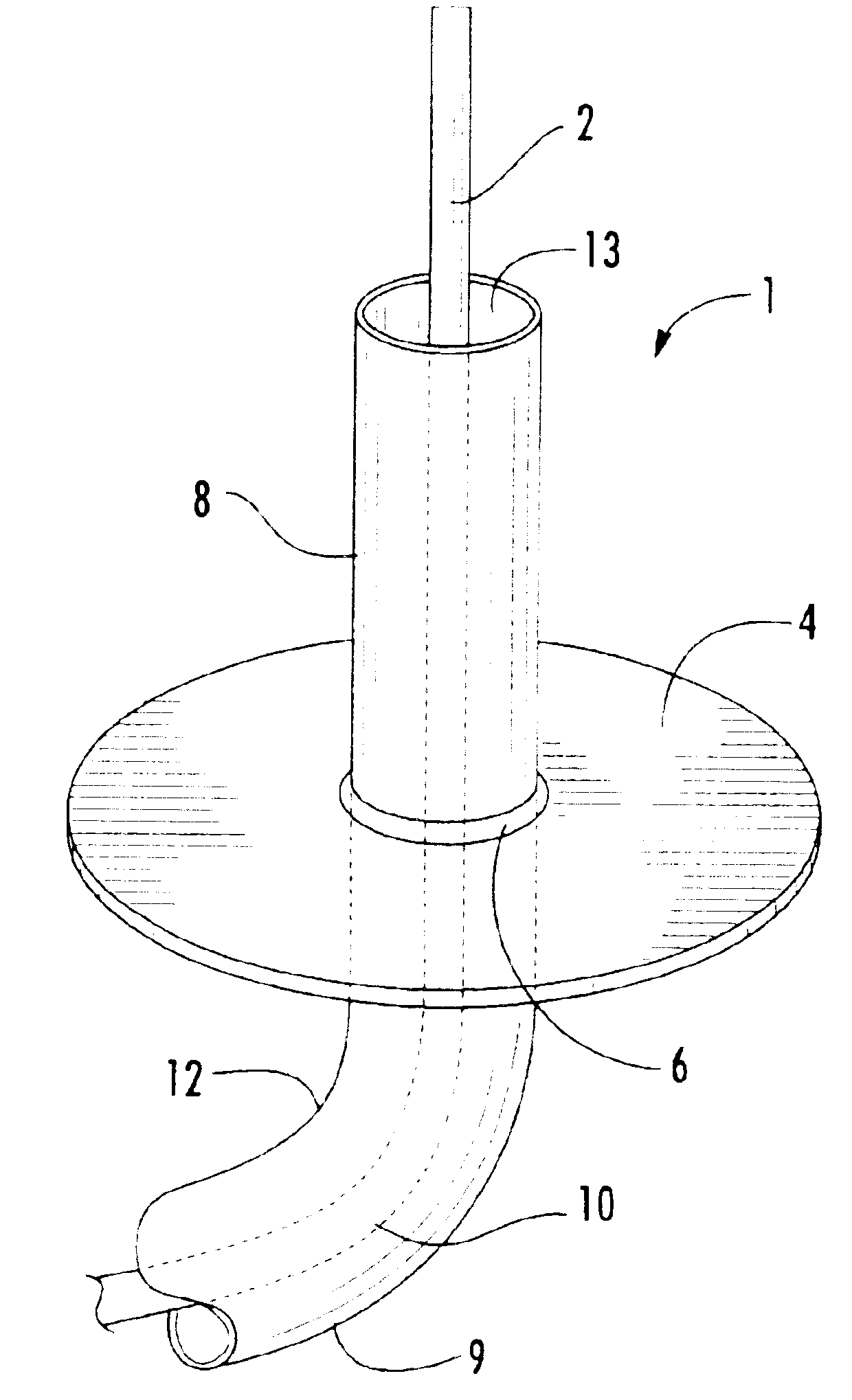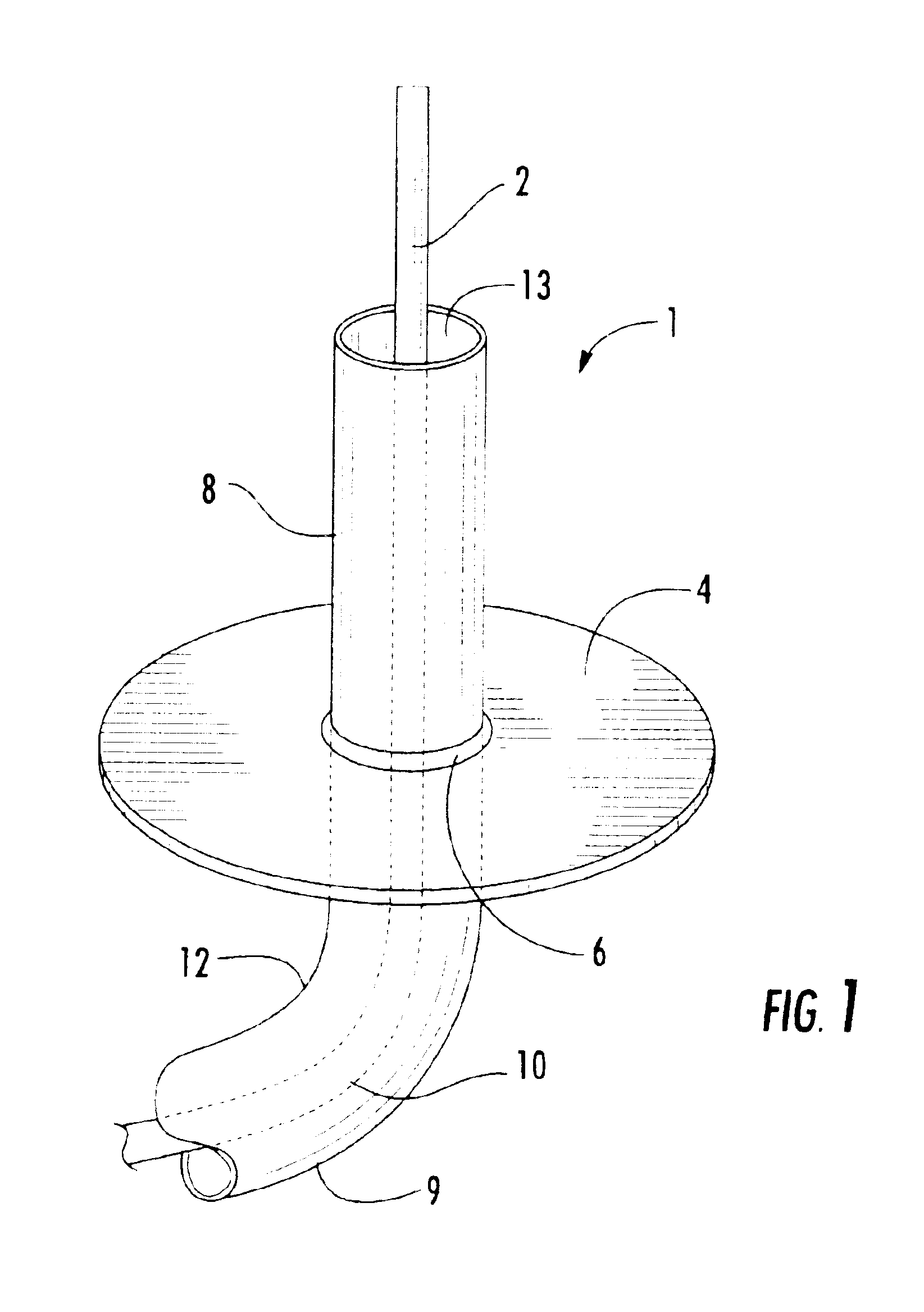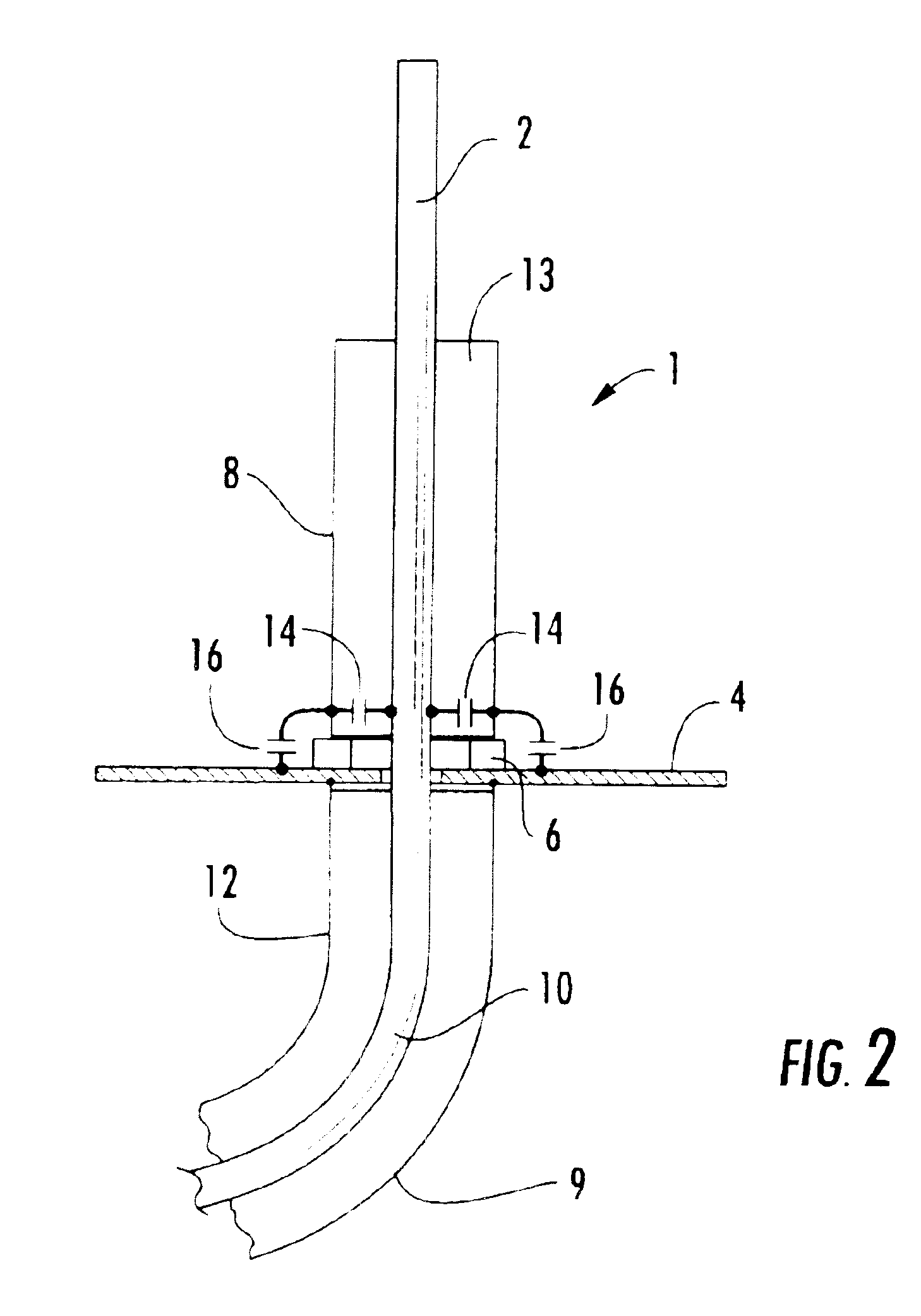Dual band sleeve antenna
a dual-band antenna and sleeve technology, applied in the direction of resonant antennas, elongated active elements, antenna supports/mountings, etc., can solve the problems of increased cost and manufacturing tolerance requirements, difficult to provide a single antenna solution with acceptable dual-band performance, and difficult to tune the resulting antenna to dual-bands that are not harmonically related
- Summary
- Abstract
- Description
- Claims
- Application Information
AI Technical Summary
Benefits of technology
Problems solved by technology
Method used
Image
Examples
Embodiment Construction
[0016]A first embodiment of the antenna 1 is shown in FIG. 1. An antenna element 2 is fed through an aperture in a ground plane 4 upon which, insulated by a dielectric spacer 6 a sleeve 8 is supported generally concentric about the antenna element 2. The antenna 1 may be fed, for example, by a coaxial cable 9 having an inner conductor 10 coupled to the antenna element 2 and an outer conductor 12 coupled to the ground plane 4.
[0017]In the preferred embodiment, the sleeve 8 has a simple tubular configuration without annular radiuses or other electrically interconnecting structure previously applied to prior “choke” elements. The sleeve element 8 is electrically insulated by the dielectric spacer 6 from direct contact with the ground plane 4 and by the air gap 13 differential between the outer diameter of the antenna element 2 and the inner diameter of the sleeve 8.
[0018]When fed with an RF signal, the sleeve 8 becomes capacitively coupled both to the ground plane 4 and to the antenna ...
PUM
 Login to View More
Login to View More Abstract
Description
Claims
Application Information
 Login to View More
Login to View More - R&D
- Intellectual Property
- Life Sciences
- Materials
- Tech Scout
- Unparalleled Data Quality
- Higher Quality Content
- 60% Fewer Hallucinations
Browse by: Latest US Patents, China's latest patents, Technical Efficacy Thesaurus, Application Domain, Technology Topic, Popular Technical Reports.
© 2025 PatSnap. All rights reserved.Legal|Privacy policy|Modern Slavery Act Transparency Statement|Sitemap|About US| Contact US: help@patsnap.com



